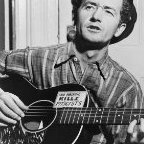[Myanmar] Mon Celebrate National Day, Call Again For Federal State
-
Recently Browsing 0 members
- No registered users viewing this page.
-
Topics
-
-
Popular Contributors
-
-
Latest posts...
-
146
Anybody planning to go back to the US?
That is perhaps the single most un-American statement I have heard to date. You don't think we need to follow the most important US laws, those which guarantee Americans freedom and security? OK... I think I'm seeing MAGA goals now... removal of the US Constitution! Why not just come out and say what you believe; not all people are created equal. Sorry, but with morals like yours, it would be foolish of me to continue discussing this issue with you. Have the day you deserve. -
327
BREAKING - WSJ: Trump’s Name All Over The Epstein Files
A lot of the lawsuits regarding Epstein are suspect. When it was decided to use his entire estate to "compensate survivors" suddenly literally hundreds of women turned up who all claimed to have been abused by Epstein, hoping to be paid out of the legal fund set up for this purpose. Many of them were not compensated as their stories were clearly made up. There is no doubt whatever, that a massive proportion of the main witness, Virginia Giuffre, was entirely made up and a tissue of lies. For instance she started a legal action against Alan Dershowitz and had to admit half-way through that in fact he never slept with her. She tried to save face by saying "she made a mistake". Epstein is a minefield of false information and thus a dream come true for consipracy nuts. -
123
Obama referred for criminal prosecution
Lets not forget https://www.facebook.com/share/v/1AwoddgH5P/ -
7
Relative status of BMW and Porche
You include the Porsche Cayenne SUV in that? -
1
Wise Account - Proof of name/address and residence.
Now from memory the last Residence Certificate i received from Thai Immigration was only available in Thai so will not be accepted by Wise, i've answered my query. I'll have to go down the Thai driving licence route as that contains all the relevant required info in both Thai and English. So i'll be off to renew shortly. -
78,028
-
-
Popular in The Pub














Recommended Posts
Create an account or sign in to comment
You need to be a member in order to leave a comment
Create an account
Sign up for a new account in our community. It's easy!
Register a new accountSign in
Already have an account? Sign in here.
Sign In Now